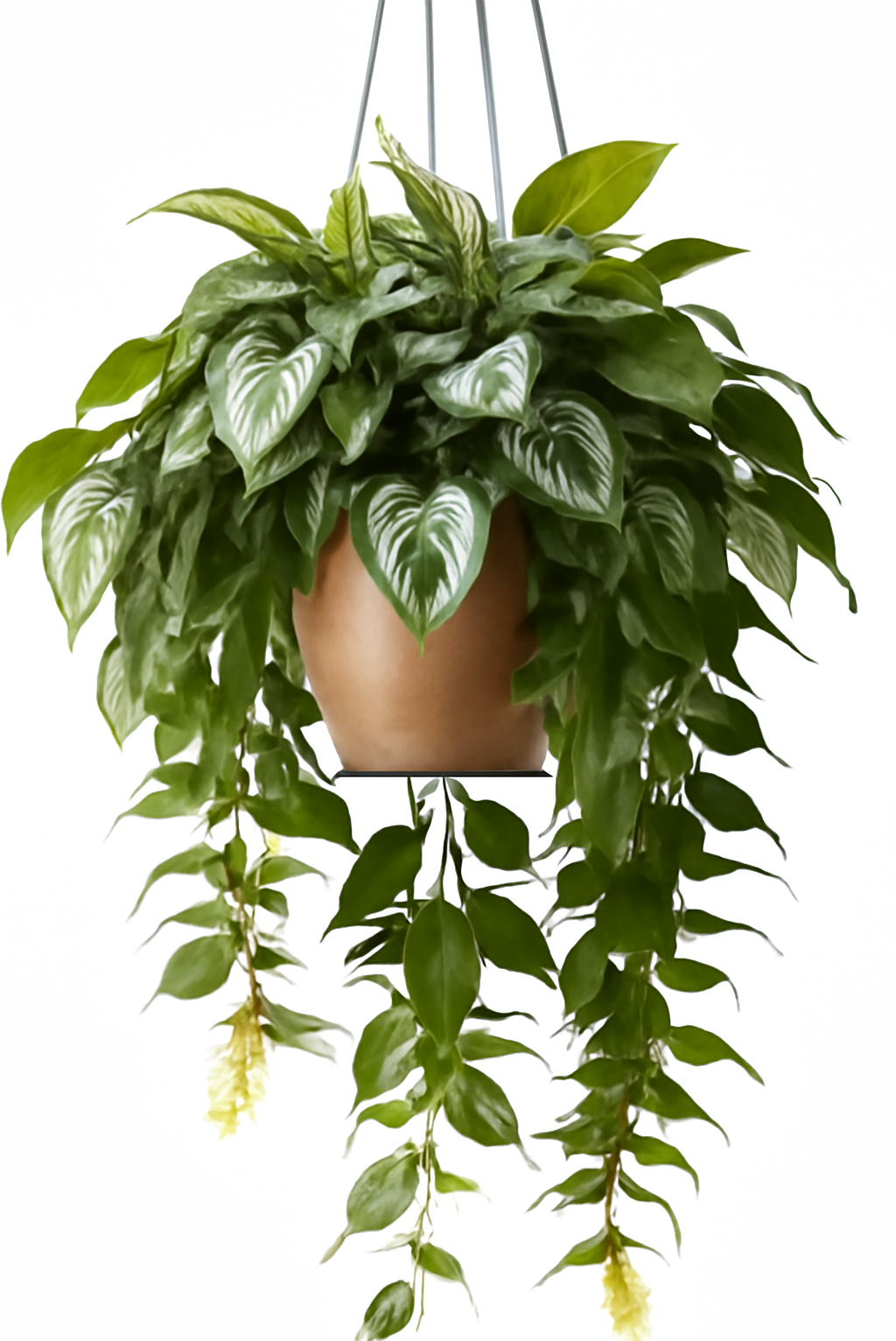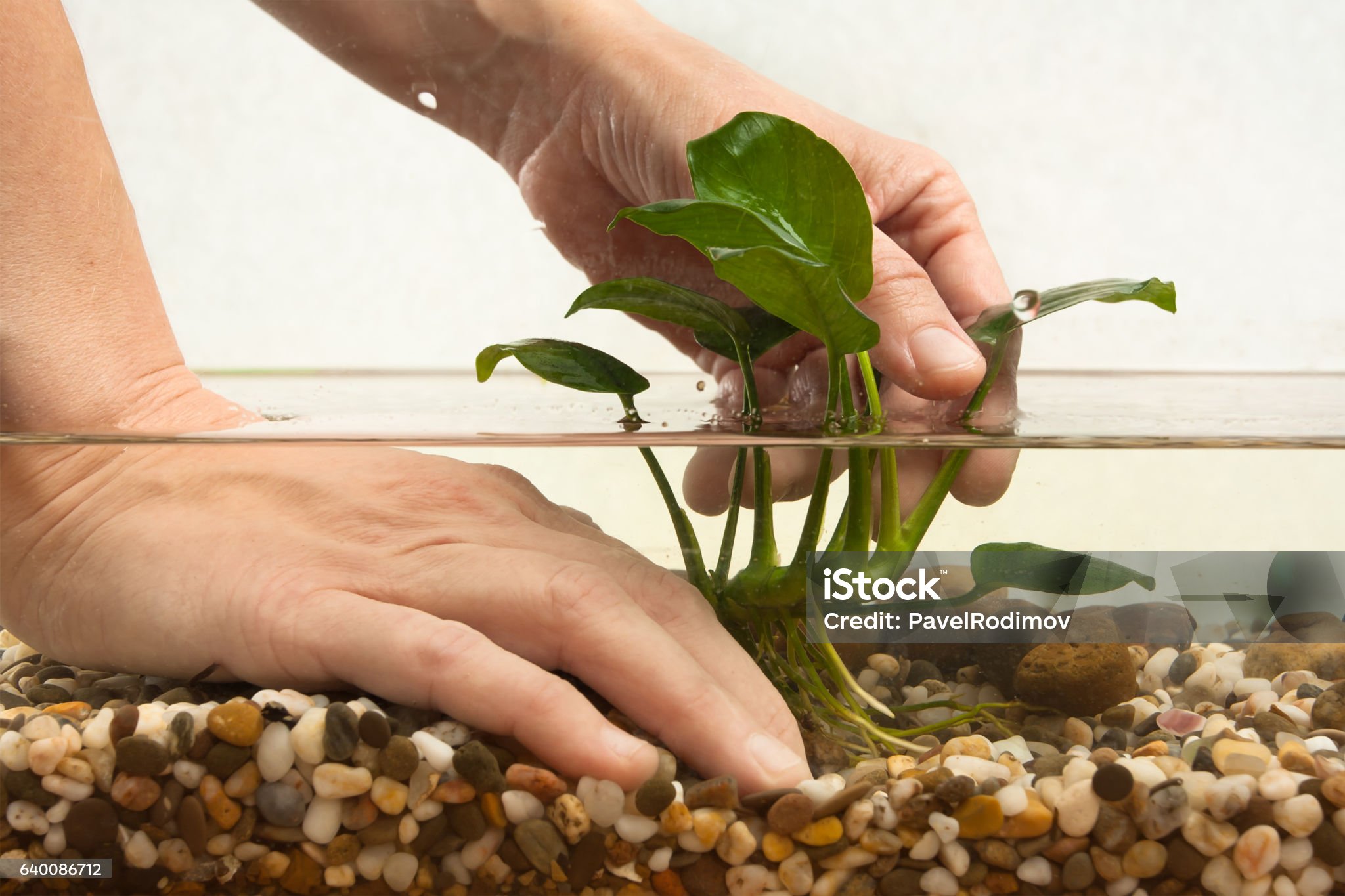My aquarium plants are turning brown. Here are 10 solutions.
Seeing your green plants turn brown is worrying. This happens because of poor lighting (too dim or too harsh), bad water (from high pH or toxins), a lack of nutrients like iron or potassium in the water, imbalances in carbon dioxide (CO2) levels, old age, or even the wrong type of plant for your tank. Sometimes algae covers the leaves. In addition, it’s just the plants adjusting after being moved or roots not getting enough oxygen.
For these reasons, leaves turn yellow or brown at the edges first. They become soft, get holes, or fall off. The plant stops growing. My friend Anika, a busy mom who set up a small aquarium for her kids. One morning, she sees her Java fern and Anubias leaves browning like old autumn leaves, also fishes that swim around look sick. This shows how real aquarium plants react. She noticed Java fern’s leaves started to curl and fade from nutrient shortages, while Anubias showed dark spots from low light. It turned her relaxing hobby into a worry. But without being panicked, with simple fixes, she had brought back the life in her aquarium plant.
1. Poor Lighting Conditions
Problem: Plants need light to make food through photosynthesis. When there’s not enough light or the wrong type of light, plants can’t produce energy. The leaves gradually start to turn brown from their edges as the plant tries to save energy by dropping weak leaves. This badly impacts the energy production of your plant and eventually leads to slow growth and discoloration across various plant types. This is very common in tanks kept in dark corners( lights placed too far from plants) or with weak bulbs( Old fluorescent bulbs).
Solution:
Use full-spectrum LED or fluorescent lights that match your tank size and plant type for plant growth. LED lights are very helpful as they provide strong and steady lighting for your plants. Make sure to keep lights on for 8–10 hours per day, not too little, not too much. Place lights 6-12 inches above the water surface. Adjust intensity based on plant needs, such as low-light species like Java fern need less. You can also use timers for consistency. Check often that the light reaches all areas of the tank, especially the bottom. Replace old bulbs every 6-12 months.
2. Nutrient Deficiency
Plants need essential nutrients like-
- Iron( for deep green color),
- Potassium (for overall health)
- Magnesium
- Nitrogen (for green growth)
- Phosphorus (for roots and flowers)
Without enough of these elements, leaves can turn brown, yellow, or develop spots. It spreads from the older parts and affects the overall structure, which might weaken your plant and stop its growth. Just like humans need vitamins, plants need their minerals too. Many aquarium owners think fish waste provides enough nutrition for plants, but this isn’t true. Fish waste mainly provides nitrogen, but plants need many other nutrients too. In nature, plants get nutrients from rich soil, fallen leaves, and natural water sources. In aquariums, we have to replace all of this artificially.
Solution:
Start using liquid plant fertilizers every week. Test water for nutrient levels using kits following the bottle directions carefully, or push root tabs that are designed for aquariums near their roots every 3-4 months. These tablets slowly release nutrients directly to the roots.
For plants with big root systems (like Amazon swords), make sure to test your water monthly for nutrient levels using the aquarium test kits. This helps you understand what your plants need more of. If you have lots of plants or fast-growing species, you might need to fertilize twice a week. You can start with an all-in-one fertilizer, then adjust based on how your plants respond.
3. Carbon dioxide (CO2) Imbalance
Carbon dioxide is a vital raw material for plant growth. Without enough Carbon dioxide, your plant might show several symptoms for example:-
Growth slows dramatically, new leaves look pale or deformed, and older leaves turn brown. Plants might also develop holes in their leaves or have stems that become thin and weak, which ultimately leads your plant to poor health conditions.
Even plants with perfect lighting and nutrients can’t function properly, and as a result, your plant might struggle and fail to grow properly.
Solution:
Install a CO2 injection system or use liquid carbon supplements (like Seachem Excel) with a bubble counter and pressure regulator. For beginners, start with 1-2 bubbles per second and adjust based on how your plants respond. Healthy plants will show new growth within 1-2 weeks. Add these according to directions. For best use, consider a timer system to turn off CO2 at night when plants don’t use it. You also need to monitor your tank’s pH levels when adding CO2, as it makes the water more acidic. This is usually beneficial for plants, but watch that pH doesn’t drop too low too quickly. Most plants prefer a pH between 6.0-7.0.
4. Poor Water Quality
Dirty or unbalanced water harms plants. High levels of ammonia, nitrite, or nitrate might be poisonous to your plants. It can lead the plant’s leaves to browning or melting leaves, and it might hamper the plant’s overall health. Plants are very sensitive to sudden water changes. If the water is polluted, it blocks the nutrient flow to the leaves.
Solution:
Install additional circulation pumps to create gentle water movement throughout the entire tank. Position these devices to create circular flow patterns that reach all areas without creating strong currents that damage fresh plants.
Clean all intake tubes and filter outputs monthly to keep a proper balance in flow rates. Blocked equipment usually reduces circulation and creates poor conditions that cause plant problems.
For large tanks, consider multiple smaller pumps rather than one large one. This creates more circulation and provides backup if one pump fails. You can also use Wave makers that can simulate natural water movement, which is preferable for many plants.
Keep your tall plants in a position where they won’t block water flow to shorter plants behind them. Create pathways for water movement. You also need to test your water regularly. Do partial water changes (20–30% weekly) and keep the filter clean, but don’t over-clean it, as good bacteria live there. Sometimes you may need to add beneficial bacteria supplements to cycle the tank properly. You can use water conditioners to remove chlorine and heavy metals. Test circulation by dropping a small amount of fish food and watching how it moves through the tank. Food should circulate throughout the tank within a few minutes. Dead spots where food settles indicate areas that need better flow.
5. Incorrect Water Temperature
Aquarium plants need a certain temperature to grow properly. If the water is too cold or too hot, it can affect the plant, and the leaves might look brown.
Solution: Keep the tank temperature between 22–28°C (72–82°F), depending on the plant species. Use a reliable heater and thermometer to monitor.
6. Algae Growth on Leaves
Algae are like weeds in your garden; they compete with plants for nutrients and light, but they’re much more aggressive. Several types of algae block light if they attack the leaves of your plant. It also suffocates the plant.
Brown algae (diatoms) appear as a brown, dusty coating that’s easy to wipe off but comes back quickly. This algae grows in new tanks or tanks that are made with silicate. Black brush algae looks like tiny black hairs, usually seen on leaf edges, and is extremely difficult to remove. Green algae makes plants look sick and unhealthy.
When algae covers plant leaves, the plants can’t make their food properly.
Algae grows much faster than plants if the tank is in their favourable condition. Eventually, within weeks, your tank can be filled with algae. Poor lighting conditions, excess nutrients, and inadequate plant growth create perfect conditions for algae blooms. Remember, if it is once established, algae is difficult to remove and keeps coming back.
Solution:
Manually remove algae whenever you see it using a soft brush, cloth, or algae scraper. Always be gentle with plant leaves and try to remove them thoroughly. This physical removal is crucial and should be done at least once a week for better maintenance.
Adding algae-eating creatures would be a good way to prevent algae. Otocinclus catfish, Amano shrimp, and nerite snails are excellent algae eaters that won’t harm plants. They work 24/7, which cleans leaves and surfaces..
Adjust your lighting schedule to favor plants over algae. Maintain daily lighting to 6-8 hours if algae is severe. It is ideal to take a midday break (lights on 4 hours, off 2 hours, on 4 hours) to stop algae growth.
Sometimes adding more plant fertilizers actually reduces algae. For severe algae problems, consider a UV sterilizer that kills algae spores in the water column. Clean all glass, decorations, and equipment weekly to remove algae before it spreads to plants.

Other Factors
1. Snails, insects, or fungal infections can damage your plant’s leaves. It can create brown patches on leaves that spread if left untreated. To avoid these problems, you need to quarantine new plants, manually remove pests, and use mild treatments like hydrogen peroxide dips.
2. Like all living things, plants also get old and shed dying leaves. That’s why these leaves may turn brown naturally as new growth appears. I try to trim dead or dying leaves regularly. This is a good practice for fish tank owners to keep the tank clean.
3. We see some common plants in stores or online shops that might not be true aquatic plants. Yes! You have heard right. They may survive for a while, but eventually rot and turn brown. Lists of plants that you should avoid buying-
4.Sometimes you may need to move your plant from one tank to another. This is a common practice, but it significantly harms your aquarium plants. They may go through a shock phase. Don’t worry! We have solutions for your problem. Trim dead leaves and give the plant time to adjust. Keep water conditions stable and avoid moving the plant again too soon.
5.When you put too many plants or fish in a single tank, it might look good but in reality it creates competition for resources. As a result, the leaves of your plants may look brown shaded. Stock fish moderately to reduce waste and maintain balance.
So these are the reasons why your aquarium plants are turning brown, but don’t worry, you can treat your plants if you take proper care.
A Proper Caring Chart For Your Aquarium Plants:Beginner Friendly Expert Tips
Here is a chart of the proper care guide for your aquarium plants for beginners. By following it properly, you can avoid brown spots on plant leaves or prevent your plant from dying.
| Category | Details |
| 🌡️ Water Temperature | 22–28°C (72–82°F) — most tropical plants thrive in this range |
| 💡 Lighting | 8–10 hours/day; use full-spectrum LED or fluorescent lights |
| 🧪 Water Parameters | pH: 6.5–7.5 |
| 💨 CO₂ Injection | Optional but beneficial for fast-growing plants |
| 🧴 Fertilization | Weekly liquid fertilizers + root tabs every 1–2 months |
| ✂️ Pruning | Trim dead or overgrown leaves weekly for healthy growth |
| 🚿 Water Changes | 25–30% weekly to prevent algae |
| 🧼 Algae Control | Avoid overfeeding fish and add algae eaters |
| Floating plants | Duckweed, Frogbit, Water Lettuce (great for shade and nitrate control) |
| Low-maintenance plants | Java Fern, Anubias, Cryptocoryne, Vallisneria |
Conclusion:
Aquarium plants also need care like other indoor plants. So if you are facing problems with your indoor plants or your indoor plants are dying or wilting, then check out other articles on our site.


